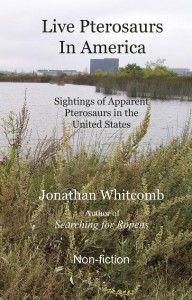Early yesterday morning, November 30, 2010, I posted a short announcement on the “Cryptids on the Wing” forum of Cryptozoology.com. The quick, negative responses were no surprise to me, for I have received similar dismissals, for years, on this forum. The first criticism deserves attention here, as an example of bulverism.
Aside from the image of Mr. Kuhn’s sketch, the bulk of my own posting is in the first paragraph:
I gave Mr. Kuhn a surprise phone call earlier this year (2010). I talked with him for some time and found him to be highly credible. He answered my questions as an honest person would. He stands by his long account of the encounter almost four decades ago, even though he has been ridiculed by at least a few skeptics.
Half a day after my comment was posted, the first reply came up; it was from “Karl.” His first sentence seemed to me a perfect example of bulverism:
Finding him credible supports your agenda.
What human who ever lived on this earth has ever said or done anything that was contrary to that person’s personal purpose? I admit to being human. So what is the difference between “purpose” and “agenda?” Karl’s choice of words simply means that he objects to my purpose, for that is the way the word “agenda” is now used among those fluent in English (but not necessarily both adept at and involved in reasoning). He insinuates that I have an improper purpose.
How is his first sentence an example of bulverism? It says nothing about the point: a sighting that suggests pterosaurs are still living; it avoids reasoning on the subject, instead pointing out a flaw or supposed flaw in an opponent, the essence of bulverism.
The next sentence wraps up what Karl had to say, at least at this time:
He can be as credible as you need him to be, but his story remains incredible, and contradicts common sense.
He continues the bulverism (referring to my own needs), concluding his remarks with a statement that the story (of Kuhn’s sighting of two pterosaurs in Cuba, in 1971) is incredible, contradicting “common sense.” He ends there, apparently assuming that everybody should therefore dismiss the story, with no other explanation necessary. Let’s look more closely.
Should every human experience that is out of the ordinary be dismissed because it is unusual? Where would astronomy be if all solar eclipses were disbelieved? Did the “unsinkable” Titanic actually avoid sinking, because one report of a disaster was incredible? No, the label of “incredible” does not, in itself, require anyone to dismiss a reported human experience.
So why not set aside my personal purpose and Karl’s personal purpose, to examine what Eskin Kuhn says that he personally experienced?



